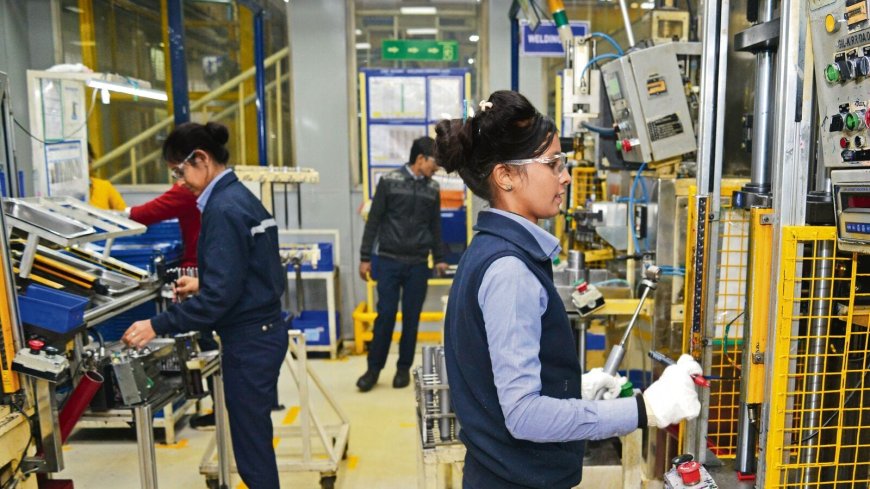Can This Small-Cap Auto Ancillary Firm’s Premium Pivot Deliver Big Gains?
A small-cap auto ancillary firm is shifting to premium vehicle components. Will this strategy deliver sustainable gains? Find out what analysts and investors say.

Small-Cap Auto Ancillary Player Bets Big on Premiumization
In a bold strategic shift, a small-cap auto ancillary company—previously known for catering to the mass-market two-wheeler and entry-level car segments—is now pivoting toward the premium and high-performance vehicle category. This transformation comes as the Indian automotive landscape undergoes significant changes, with increasing demand for safety, comfort, and performance-oriented components in high-end vehicles.
With this repositioning, the firm aims to ride the ongoing structural uptrend in premium vehicle sales and align its product portfolio with Original Equipment Manufacturers (OEMs) targeting the luxury and electric vehicle (EV) markets.
Company Background
Founded over two decades ago, the company has been a quiet performer in the Rs 2,000–2,500 crore market capitalization range. It specializes in precision components like suspension systems, steering assemblies, and forged parts used across scooters, motorcycles, and compact cars. Historically, over 70% of its revenue has come from the budget segment, where margins have been consistently under pressure.
However, FY24 marked a turning point, with the management unveiling a five-year roadmap focusing on premiumization, export diversification, and electric mobility.
Why the Pivot?
The premium auto segment in India has shown strong resilience despite macroeconomic challenges. According to SIAM (Society of Indian Automobile Manufacturers), luxury vehicle sales grew by over 20% YoY in FY24. The rise of aspirational middle-class consumers, growth in per capita income, and expanding urbanization are contributing to a structural shift in consumer preferences.
Additionally, global OEMs are increasingly sourcing high-quality components from India to de-risk their supply chains—a trend that smaller players are now capitalizing on.
“The component maker’s move is timely. Indian suppliers who can demonstrate consistent quality at scale will benefit immensely from this global ‘China+1’ sentiment,” said Rajesh Iyer, Senior Auto Analyst at Axis Securities.
Strategic Initiatives
1. Product Realignment
The company has expanded its R&D spending by 35% in the past two years. It is now focused on developing high-value components such as electronically controlled suspension arms, aluminum alloy parts for EVs, and ABS-compatible braking systems.
2. Client Mix Transformation
Previously dependent on two domestic OEMs, the company has added five new clients, including two European automakers and a US-based EV start-up. Exports, which made up only 10% of revenue in FY22, rose to 21% by Q4 FY24.
3. Capex and Capacity Expansion
A new Rs 300 crore manufacturing facility in Gujarat is being commissioned to cater exclusively to premium auto and electric vehicle clients. The plant is expected to go live by Q1 FY26 and increase topline capacity by 30%.
Financials: Early Signs of Margin Improvement
While topline growth remains modest at 12% YoY, EBITDA margins have improved from 11.2% in FY23 to 13.8% in FY24, reflecting a better product mix and operational leverage.
Key Financial Metrics (FY24):
-
Revenue: ₹1,120 crore
-
EBITDA: ₹154.6 crore
-
Net Profit: ₹82 crore
-
Export Contribution: 21%
-
R&D Spend: ₹37 crore
“Margin expansion will be key to rerating. If the company sustains 14%+ EBITDA margins and delivers double-digit volume growth, the stock could see a revaluation,” noted Sneha Kapoor, Fund Manager at WhiteOak Capital.
Stock Market Performance
The stock has rallied nearly 47% over the past 12 months, outperforming both the Nifty Auto Index (+32%) and the broader Nifty Smallcap 250 (+25%). However, at a trailing P/E of 18.2x, it still trades at a discount to mid-cap peers operating in the premium segment.
Technical analysts see strong support at ₹142 and an upside resistance at ₹175.
Investor Outlook: High Risk, High Reward?
Despite its small-cap status, the company is increasingly being tracked by institutional investors. Two mutual funds and one domestic insurance company have entered the stock in the last two quarters.
The biggest risk remains execution—particularly around export scalability, R&D effectiveness, and timely commissioning of the new facility. The fragmented nature of the global auto ancillary industry also means the firm must continuously innovate to stay relevant.
That said, the shift toward premiumization is structurally sound and well-aligned with macro trends.
Final Word
While still in the early innings of transformation, this small-cap auto ancillary firm’s pivot toward the premium vehicle ecosystem could unlock significant long-term value. For investors with a high-risk appetite and a 3–5 year horizon, the company presents a compelling mix of earnings visibility, product innovation, and global exposure.
As India’s premium vehicle market expands and OEMs demand better technology and consistency, this underdog could emerge as a key beneficiary in the next auto upcycle.
What's Your Reaction?
 Like
0
Like
0
 Dislike
0
Dislike
0
 Love
0
Love
0
 Funny
0
Funny
0
 Angry
0
Angry
0
 Sad
0
Sad
0
 Wow
0
Wow
0













































































